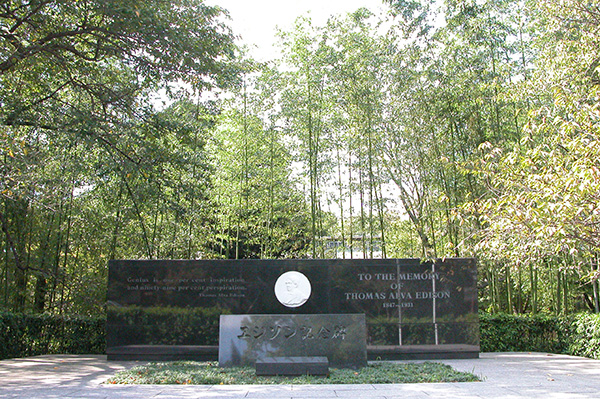Thomas Edison Monument

Thomas Alva Edison (1847–1931) was a prolific American inventor, innovator, and businessman. He
developed and improved many devices that had a significant impact on modern life, including the
phonograph, the early motion picture machine, and the electric light bulb. It is believed that
Edison’s work on the incandescent light bulb is strongly connected to Yawata, and in 1934, a monument
was erected in the precincts of Iwashimizu Hachimangu Shrine on Mt. Otokoyama to commemorate Edison
and his achievements. The monument was moved to the current location in 1958 and was redesigned in
1984.
When Edison focused on developing an electric lighting system in 1878, he needed to create a
long-lasting and reliable light bulb. The key was finding a suitable material for the filament. He
tried thousands of options, from metals to cotton thread and even beard hair, and concluded that
bamboo was the most promising. Then Edison’s assistants were sent to collect bamboo samples from
around the world, including Kyoto. High-quality bamboo specimens gathered on their journey did indeed
produce especially durable filaments that burned for over 1,000 hours, and as a result, this discovery
greatly contributed to the spread of incandescent light bulbs. It is believed that Edison used bamboo
from the grove near Iwashimizu Hachimangu, recognized throughout Japan for its excellent quality, as
filaments in his light bulbs.
To commemorate Edison’s birth and death, Iwashimizu Hachimangu holds two annual festivals, on February
11th and around October 18th. The shrine also has wooden votive tablets in honor of Edison, reflecting
his importance and renown in Yawata.

